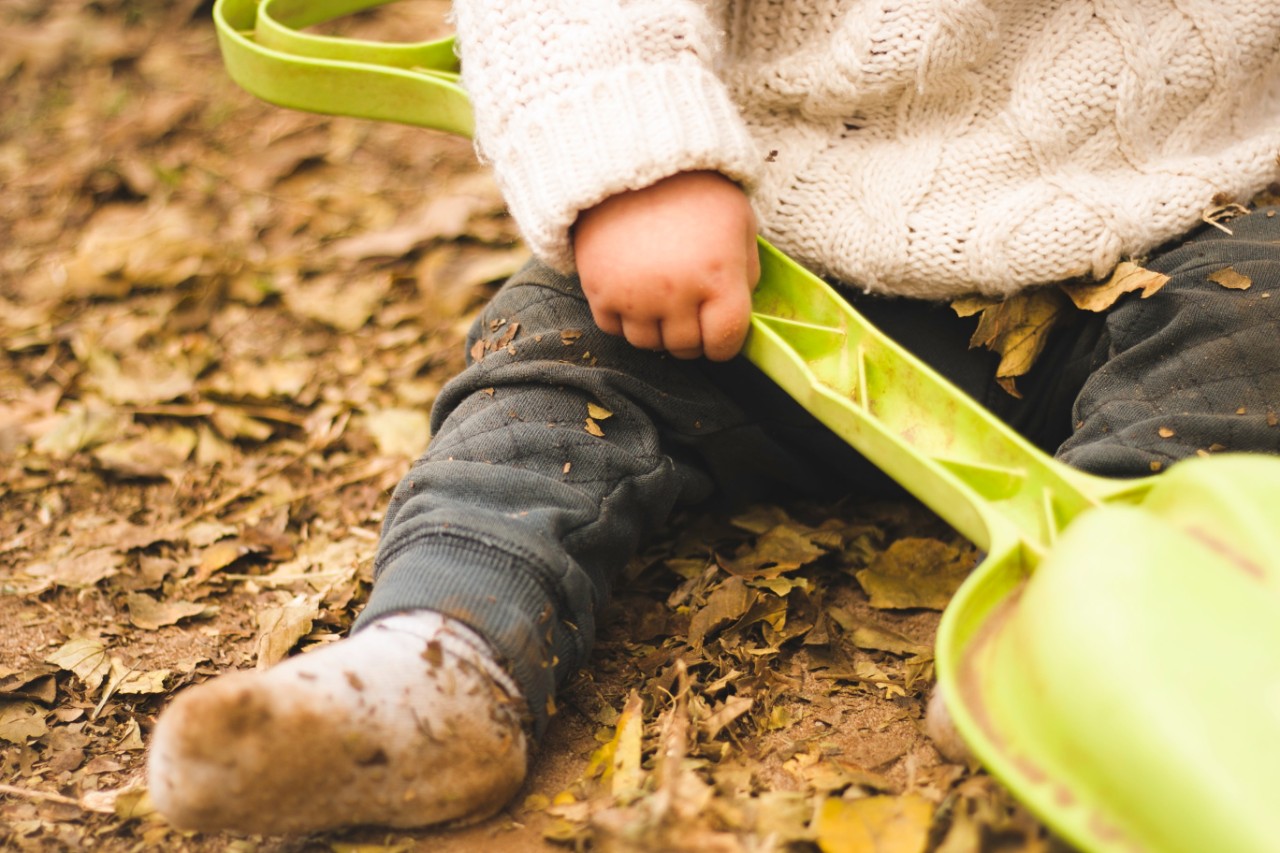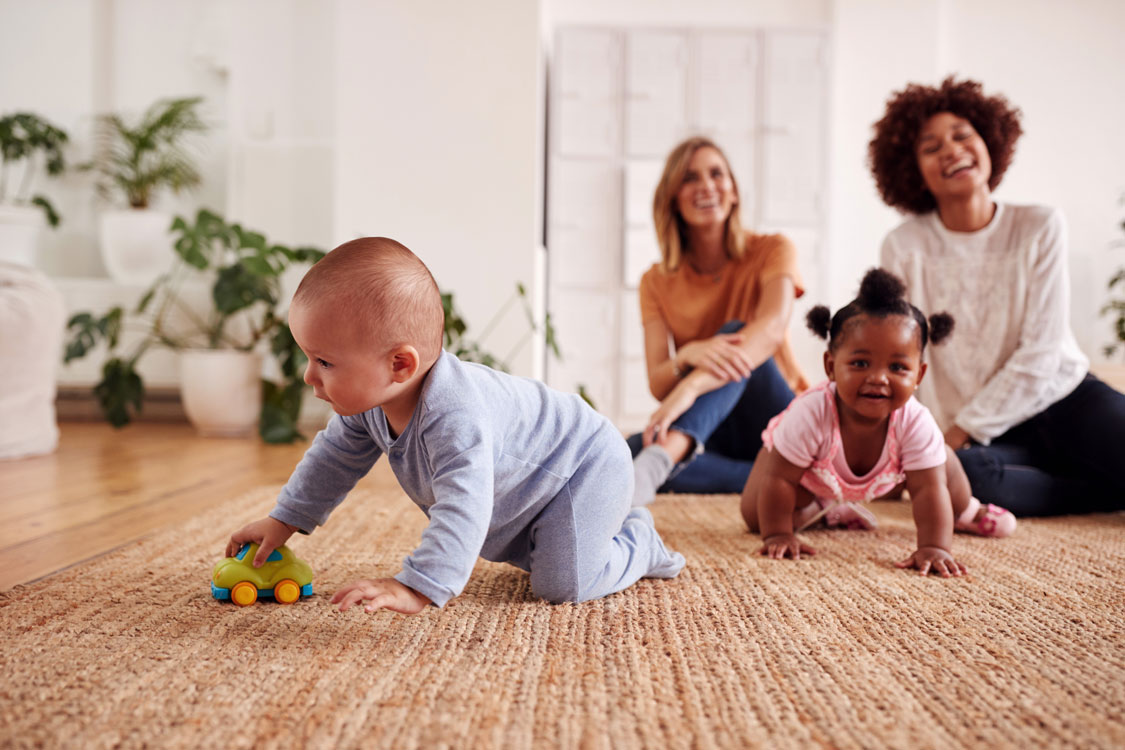Is my baby developing normally?
It’s important to remember that each child develops at its own pace. Some babies are more courageous, others more fearful, some walk at 12 months, others only start talking at the age of two.

But for all their differences: But for all this variation, there are milestones that apply broadly to all the babies in a particular culture – some will come earlier, others a bit later. Key developments at a glance:
Speech perception and speech sounds:
- 3 to 4 months: Recognize stress patterns of the mother tongue
- 5 to 6 months: Recognizing the emotional meaning of words
- 8 to 9 months: Recognizing words in the flow of speech
- 10 to 12 months: Understanding the meaning of words
- 16 to 30 months: Understanding grammatical rules
- 30 to 36 months: Overgeneralization of grammatical rules
Speech production:
- 1 month: Cooing
- 3 to 5 months: babbling and babbling
- 7 to 8 months: Babbling (doubling of syllables)
- 8 to 10 months: Jargoning (gibberish)
- 11 to 12 months: First words
- 18 months: Vocabulary explosion
- 20 to 30 months: two-word sentences
- 30 to 36 months: three-word and multi-word sentences
Parents can offer their children only limited support when it comes to language development. However, in the first few months, babies like it when you answer them and imitate their sounds – or even make new sounds. You don’t have to babble in “baby talk”; just speak normally. Babies like to hear your voice and have your attention by taking part in a simple conversation. Between the 3rd and 6th month From the first month, the child likes to experience toys with which it can produce sounds or noise. He’ll also like to hear your commentary on what’s happening, e.g. “That’s a lovely soft sheep.”
Perception, language and thought:
Babies soon learn to express themselves. At 3 months your baby will have different cries to express his needs (hunger, annoyance, boredom) and will rely on you to interpret them correctly. He will also be gurgling and laughing now. At 6 months he’ll be babbling in different pitches and can recognise other people’s moods.
Motor development:
Development progresses at its own pace and cannot and shouldn’t be forced. This also applies to motor development. It’e enough for you to create good conditions for this. For example, a baby will train his own motor skills – at his own pace – as long as he has sufficient freedom to move and is not always strapped into a rocker. Broad development steps:
- Until 4. Month: Head check
- Until 9. Month: Free sitting
- Until 15. Month: Free walking
Crawling:
At 3 or 4 months, babies adopt a seal pose – head stretched forwards inquisitively, lying on their tummies with the upper body supported on the lower arms and hands, elbows stretched. It’s the perfect position to explore the world from their play mat. This isn’t just an important step in your child’s motor development; it also shows that your child has excellent control of his visual attention, as he not only responds to stimuli but also seeks them out.
Sitting
Before the 4. Your baby shouldn’t sit up before 4 months, because his muscles can’t yet support his own body weight. Always remember to support his head when he’s in your arms. In most cases, children from the age of 6 are directed to the right place. month and sit up independently for the first time.
Sucking and grabbing:
Babies need to master several skills in order to put an object in their mouth. And the preparations for this start early: as early as the 4th semester. In the 4th month of pregnancy, many children are already sucking their finger in the womb, showing they’ve mastered hand-mouth coordination. You know they’ve got the hang of hand-eye coordination when they bring a hand to their face, watch it and move their fingers at the same time. From about the age of 3. By the age of one month, a child can bring its hands together and has mastered hand-hand coordination. From the 5. From the 5th month, babies can usually grab a chosen object.
From milk to food:
The World Health Organisation (WHO) recommends exclusively breastfeeding for the first 6 months. The latest findings in baby food research indicate that 4 months is the best age to start adding small amounts of food to your baby’s diet. Trying out a wide variety of foods can help prevent allergies. Initially, your baby will only suck on cooked carrots, pieces of bread, cooked slices of apple, etc. Always watch your baby while he’s eating because there’s a risk of choking! Gradually, you can expand the range of finger food you try out, especially with children who don’t like purées. Like everything else, eating habits are very individual. At around 6 months, your baby will be ready to eat from a spoon. He can consciously close his mouth, hold his tongue down and swallow the purée or other types of food.
Self-recognition:
This skill develops at around 18 months. Month of life. Your child will then recognize itself in the mirror, becoming self-aware.
Social skills and stranger anxiety:
At 3 months, babies can hold eye contact and turn their heads to do so. They enjoy being talked to and will smile at familiar and strange faces alike while learning to differentiate between the two. Stranger anxiety begins at around 8 months.
Sleeping arrangements
On average, newborn babies sleep for 18 out of 24 hours, i.e. three-quarters of the day, but they don’t tend to sleep for long periods – not even at night, because they need to eat much more often than adults or even young children. In the first 3 months, your baby will have a sleep-wake cycle, sleeping a little longer at night, but he will wake more often than an adult and won’t sleep as deeply. This cycle varies from baby to baby, but generally you can expect your baby to sleep for up to two hours at a time during the day and from four to six hours at night. Some babies will sleep through the night after a few weeks, while most continue to wake up for months, others even up to a year.
Morning and afternoon naps:
At the age of 3 months, your baby will sleep around twice as long at night as during the day. At 6 months, your baby’s morning and afternoon naps will become longer but less frequent. At this age, he’ll tend to sleep for around 11 hours with short interruptions, and for half an hour during the day. However, your baby’s sleep-wake cycle – just like yours – will depend on his daily eating pattern, body temperature and hormone balance.
Routine:
As your child has his own biorhythm, he won’t always be able to sleep when you want him to. However, a standard routine and fixed eating and sleeping times will help support his biorhythm.
Steven P. Shelov (Editor), “Caring for Your Baby and Young Child: Birth to Age 5”.


